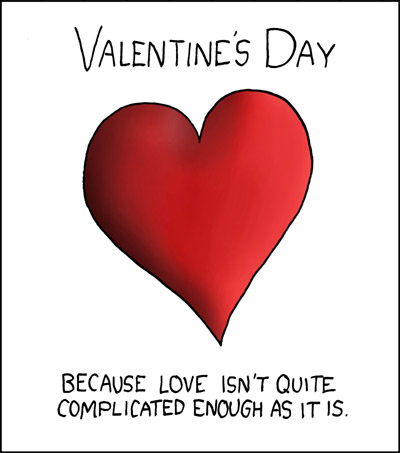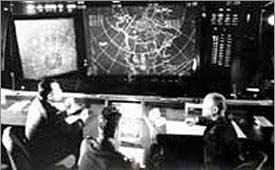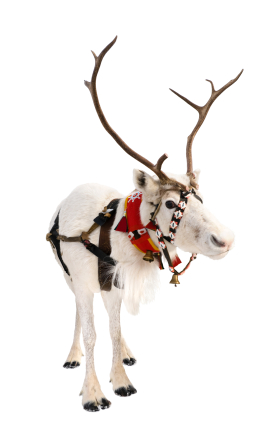 Here’s a simple rundown (in no particular order) of 4 of my favourite YouTube science channels.
Here’s a simple rundown (in no particular order) of 4 of my favourite YouTube science channels.
Category Archives: Uncategorized
How pharma is breathing new life into old drugs.
 A TED talk last week by geneticist and physician Francis Collins shed some light on a massive gulf that exists in the pharmaceutical world – that between the fundamental knowledge and the application of this knowledge. We currently know the molecular cause for 4000 diseases yet only have treatments for 250 of them. The main difficulty encountered on the path from discovery to the patient’s bedside is that of the lengthy ‘pipeline’ process which all drugs must follow if they are to gain approval.
A TED talk last week by geneticist and physician Francis Collins shed some light on a massive gulf that exists in the pharmaceutical world – that between the fundamental knowledge and the application of this knowledge. We currently know the molecular cause for 4000 diseases yet only have treatments for 250 of them. The main difficulty encountered on the path from discovery to the patient’s bedside is that of the lengthy ‘pipeline’ process which all drugs must follow if they are to gain approval.
Dublin to host Europe’s largest nanotechnology conference.
 Nanoweek 2013 (14-21 June) – a week-long programme of activities designed to promote nanoscience and nanotechnology in Ireland will see Dublin will host the sixth EuroNanoForum conference as part of Ireland’s presidency of the European Council in the Convention Centre Dublin from the 18-20 June 2013.
Nanoweek 2013 (14-21 June) – a week-long programme of activities designed to promote nanoscience and nanotechnology in Ireland will see Dublin will host the sixth EuroNanoForum conference as part of Ireland’s presidency of the European Council in the Convention Centre Dublin from the 18-20 June 2013.
The conference will showcase nanotechnology innovations to 1,200 delegates from 50 countries with high-profile speakers from industry, government and research, such as Shell, Nokia Research Laboratories, Intel, Philips Healthcare and Max-Planck Institute among others, discussing the economic and technological impact of nanotechnologies on European growth. It is being organised as a joint venture between Enterprise Ireland and Spinverse and supported by the European Commission Directorate for Research and Innovation.
Spectacular video of coronal rain released by NASA

Last week, NASA released a video recorded on July 19th 2012 which features an amazing display of what’s known as coronal rain which occurs in conjunction with a solar flare and coronal mass ejection. This process began when a massive solar flare burst from an area of magnetic activity. This was followed by a coronal mass ejection which is a violent burst of plasma and charged particles that is so powerful that it even affects the earth’s magnetosphere, causing phenomena such as the Northern and Southern lights.
Happy Birthday Copernicus
 Today’s Google doodle is dedicated to the 540th birthday of Nicolaus Copernicus – the man famous for the heliocentric model of our universe ie the model that puts the sun at the centre. Up until this model it was believed that it was the Planet Earth, in fact, which was at the centre. We now know that the Sun is the centre, not of the universe, but of our own solar system. However this revolutionary idea was a massive advance over previous theories and sowed the seeds for the scientific revolution which was to follow. One of the great polymaths of the Renaissance, Copernicus was a mathematician, astronomer, jurist with a doctorate in law, physician, quadrilingual polyglot, classics scholar, translator, artist, Catholic priest, governor, diplomat and economist. Feel free to check out the doodle at google.com (expired) and wish this Polish genius “wszystkiego najwspanialszego.” (that’s Polish for “happy birthday.”)
Today’s Google doodle is dedicated to the 540th birthday of Nicolaus Copernicus – the man famous for the heliocentric model of our universe ie the model that puts the sun at the centre. Up until this model it was believed that it was the Planet Earth, in fact, which was at the centre. We now know that the Sun is the centre, not of the universe, but of our own solar system. However this revolutionary idea was a massive advance over previous theories and sowed the seeds for the scientific revolution which was to follow. One of the great polymaths of the Renaissance, Copernicus was a mathematician, astronomer, jurist with a doctorate in law, physician, quadrilingual polyglot, classics scholar, translator, artist, Catholic priest, governor, diplomat and economist. Feel free to check out the doodle at google.com (expired) and wish this Polish genius “wszystkiego najwspanialszego.” (that’s Polish for “happy birthday.”)
The Science of the Valentines Day
 For those in the throes of mutual loving devotion, Valentines Day is the time of year for which no amount of flowers, e-cards, teddies and other mass-produced tokens of sincerity is enough. It is the annual perfect storm formed when fronts of love, guilt and seaside tat converge in a high pressure atmosphere of dopamine, serotonin and oxytocin all presided over by by the benevolent Love Gods of Hallmark – the supposed corporate progenitors of this ‘fabricated’ holiday. (Not entirely true, St. Valentine’s day has been celebrated as a veneration of courtly love since the 14th century. St. Valentine is also, quite interestingly from a life sciences point of view, the patron saint of Epilepsy.)
For those in the throes of mutual loving devotion, Valentines Day is the time of year for which no amount of flowers, e-cards, teddies and other mass-produced tokens of sincerity is enough. It is the annual perfect storm formed when fronts of love, guilt and seaside tat converge in a high pressure atmosphere of dopamine, serotonin and oxytocin all presided over by by the benevolent Love Gods of Hallmark – the supposed corporate progenitors of this ‘fabricated’ holiday. (Not entirely true, St. Valentine’s day has been celebrated as a veneration of courtly love since the 14th century. St. Valentine is also, quite interestingly from a life sciences point of view, the patron saint of Epilepsy.)
Its well documented that love can be reduced to the aforementioned constituent chemical parts not to mention evolutionary reward systems, but it’s difficult to appreciate this when you’re sitting eagerly awaiting your first date with a certain some one or into your third hour of a ” you hang up, no you hang up” scenario or drunkenly spray-painting “I’m in like with you” on the drive way of their parent’s semi-D.
Track Santa’s Journey Using NORAD’s Advanced Technologies.
This Christmas you will once again be able to Track Santa Claus’ Journey on the internet using NORAD’s advanced technologies. Grown-ups and children alike can go onto NORAD’s website and watch Santa Claus as he travels around the world using all the latest science and technology.
As we all know Christmas Eve is very serious business and nobody takes it more seriously than NORAD (North American Aerospace Defense Command). As we all know, in these times, everything Air-Bourne must be closely monitored and tracked in order to keep the skies safe. All vehicles whether Passenger plane, Military aircraft or space vehicle are all tracked and this includes Santa’s sleigh! NORAD does the good job of monitoring Santa’s Air-space to help him on his way but also provides Air-support to Santa Claus.
 In brief, the North American Aerospace Defense Command (NORAD) is a United States and Canada bi-national organization charged with the missions of aerospace warning and aerospace control for North America.
In brief, the North American Aerospace Defense Command (NORAD) is a United States and Canada bi-national organization charged with the missions of aerospace warning and aerospace control for North America.
For more than 50 years, NORAD and its predecessor, the Continental Air Defense Command (CONAD) have tracked Santa’s flight.
The tradition began in 1955 after a Colorado Springs-based Sears Roebuck & Co. advertisement misprinted the telephone number for children to call Santa. Instead of reaching Santa, the phone number put kids through to the CONAD Commander-in-Chief’s operations “hotline.” The Director of Operations at the time, Colonel Harry Shoup, had his staff check the radar for indications of Santa making his way south from the North Pole. Children who called were given updates on his location, and a tradition was born.
In 1958, the governments of Canada and the United States created a bi-national air defense command for North America called the North American Aerospace Defense Command, also known as NORAD, which then took on the tradition of tracking Santa.
Since that time, NORAD men, women, family and friends have selflessly volunteered their time to personally respond to phone calls and emails from children all around the world. In addition, we now track Santa using the internet. Millions of people who want to know Santa’s whereabouts now visit the NORAD Tracks Santa website.
NORAD uses four high-tech systems to track Santa – radar, satellites, Santa Cams and fighter jets.
Tracking Santa starts with the NORAD radar system called the North Warning System. This powerful radar system consists of 47 installations strung across the northern border of North America. On December 24th, NORAD monitors the radar systems continuously for indications that Santa Claus has left the North Pole.
The moment that radar indicates Santa has lifted off, NORAD use their second detection system. Satellites positioned in geo-synchronous orbit at 22,300 miles from the Earth’s surface are equipped with infrared sensors, which enable them to detect heat. Amazingly, Rudolph’s bright red nose gives off an infrared signature, which allows their satellites to detect Rudolph and Santa.
The third tracking system is the Santa Cam network. NORAD began using it in 1998, which is the year they put theirr Santa Tracking program on the internet. Santa Cams are ultra-cool, high-tech, high-speed digital cameras that are pre-positioned at many locations around the world.
NORAD only uses these cameras once a year. The cameras capture images and videos of Santa and his reindeer as they make their journey around the world.
The fourth system is made up of fighter jets. Canadian NORAD fighter pilots flying the CF-18 fighter jets intercept and welcome Santa to North America. In the United States, American NORAD fighter pilots in either the F-15, F-16 or the F-22 get the thrill of flying alongside Santa and his famous reindeer: Dasher, Dancer, Prancer, Vixen, Comet, Cupid, Donner, Blitzen and, of course, Rudolph.
Finally, media from all over the world rely on NORAD as a trusted source to provide updates on Santa’s journey.
Post by Patrick James Horan
The Science of Christmas: Santa, Reindeer, Sleigh & Chimney Explained.
Christmas and science may not appear to have much in common but a good knowledge of science is what has allowed Santa Claus to keep the Christmas spirit alive for so many years. Science is what allows Reindeer to fly and for all those presents to be delivered in one single Christmas Eve.
 Most people think that Santa Claus only works one day a year but everyone in-the-know in the Science and Technology industries is aware that Old Saint Nick spends quite a lot of the year in his research lab making sure that every year things work better and better. When you think of what a big operation Christmas night is you realise how much preparation he has do: Everything from preparing the sleigh for the enormous flight stresses that it will be under from the incredible speeds & acceleration, to ensuring his workshop uses the latest technology and quality control standards, right down to job recruiting new Elves and helpers to deal with increased global demands. All this has to be taken into account and this is where science plays a big part.
Most people think that Santa Claus only works one day a year but everyone in-the-know in the Science and Technology industries is aware that Old Saint Nick spends quite a lot of the year in his research lab making sure that every year things work better and better. When you think of what a big operation Christmas night is you realise how much preparation he has do: Everything from preparing the sleigh for the enormous flight stresses that it will be under from the incredible speeds & acceleration, to ensuring his workshop uses the latest technology and quality control standards, right down to job recruiting new Elves and helpers to deal with increased global demands. All this has to be taken into account and this is where science plays a big part.
The Tech Behind The Sleigh?
One of the most scientific pieces of kit that Santa Claus has at his disposal is the Sleigh and this requires continual technological development and countless research hours and testing in the North Pole’s one of a kind “Van Winkel Quantum-Neutron Wind Tunnel” which replicates the pressure asserted on Santa’s Sleigh. Earlier this year a tiny number of the world’s leading Scientist’s and Physicists were invited to a top-secret research facility in the North Pole to check out some of the technologies that Father Christmas and the Elves were developing. One Physicists who refused to be named (in order not to end up on Santa’s naughty list) is quoted as simply saying: “I learned that we have a long way to go to catch up with Santa in fields ranging from quantum physics, aerodynamics & thermodynamics to composite materials science – the futuristic material used on the Sleigh are beyond anything we have seen yet. Some of what Santa is developing gives me great hope for the future and will change the way the world thinks about travel as we know it.”
If we assume that Santa has to travel 510,000,000km on Christmas Eve, and that he has 32 hours to do it (Travelling east to west with the Sun, maximising his available night-time, Santa has about 32 hours to work with assuming children sleep for eight hours, he has 24 hours plus those eight to finish), then Santa will be travelling at 10,703,437.5km per hour (1,800 miles per second) which is incredible. The fastest-moving human-made object in history is the space probe Voyager 1 which manages a rather less impressive 10.8 miles per second.
As well as having to cope with the immense pressures exerted on the sleigh due to the speed, there are also the intense gravitational forces created by the weight of the Christmas presents. To counter these forces and to stop the sleigh plummeting to the ground the sleigh uses many different technologies, super-light-matter carbons and special anti-gravity composites. These also help to shield Rudolf and the Reindeers from the extreme g-forces they will encounter as they accelerate to 1800mph and decelerate again suddenly, as they move from house to house to make sure all the good boys and girls get their Christmas toys and gifts.
The Reindeer.
Rudolf and the other reindeer play a very important part in the science of Christmas and Santa has spared no expenses in research when it comes to ensuring the Reindeer’s safety and health. The Reindeer are a vital part of the Christmas Night team and do very important jobs in guiding the Sleigh. While the sleigh may contain more advanced technology than the space shuttle and better guidance systems than Air Force One, Father Christmas never just relies on technology alone. It is well know that Santa Claus is a big lover of animals but also has a great respect for what the sciences can learn from studying the animal kingdom. The Reindeer have a superior sense of direction to any technology and this is why Santa Claus relies on Rudolf to safely guide the Reindeer & Sleigh through the Quantum eddies and temporal currents. However, science can lend a helping hand.
We all know about Rudolf’s Red nose and the sound of the Reindeer’s bells that can be heard on Christmas night if you listen carefully, but there is also a very valid scientific explanation for this as well. It is a closely guarded North Pole secret as to how the tech works but what is known is that Rudolf’s shinny nose houses a tiny “temporal-tag” and combined with the metal in the special bells you see on the Reindeer’s harness; serve as a Deflector shield and sensor array. The deflector shield and sensors helps Santa, the Reindeers and the sleigh safely navigate from house to house. The jingle, jingle ringing you hear from the bells is in fact the deflector shield pulsing and sending out a field in front of the sleigh similar to the way a Dolphin uses it’s sonar.
The Christmas Chimney.
Last but by no means least, the mystery of the Christmas Chimney. Have you ever wondered how Santa Claus is able to make it down the Chimney into your living room, even in a house that has had the flue blocked up? Well, you have science to thank for that too and some of the details as to how Santa Claus does this have recently been declassified by the North Pole. Apparently, Father Christmas stands on the roof and sprinkles a super advanced “Nano-tech dust” down the chimney – this creates a transponder field that allows Santa Claus to teleport from point A to B, from the roof into your living room. So what if the Chimney is blocked I hear you scream? Well, all houses have air vents hidden in the wall and they lead up to the roof and work in a similar way, allowing the dust to float into your sitting room. All though the North Pole have refused to comment there have been rumours on Wiki-Leaks that it was Santa Claus’ Chimney trick that inspired the famous “Transporter” in the popular Star Trek TV series.
This is just a sample of some of the science that goes into making the Festive Season go off without a hitch. So next time someone says that Science and Christmas don’t go together, you will be able to explain to them about all the things that Santa Claus, the Reindeers and all the Elf working in the North Pole laboratories and toy shops do to make it a very, Merry Christmas for everyone.
Post by Patrick James Horan
Job Search Tips – How to cope with the stress?

One of the most important ventures all of us have to undertake at one time or another is a Job-Search. Looking for that new job can be a very stressful undertaking and this can be counter-productive and result in opportunities being missed. However, job hunting does not need to necessarily turn into a harrowing ordeal – or at least you can take a few steps to prevent it from becoming a nerve-wracking experience.
Take a few moments to map out your job search so that it is a healthy endeavour and not one that saps you of money, time and emotional well-being. During your job search you may even find yourself out of work for a number of weeks but you can make that time feel shorter by following a few simple tips.
Create a quick and simple budget
- Being broke isn’t fun and can cause a lot of stress and if you’re not working – whether you’ve got savings or you’re collecting unemployment benefit – most certainly you’re seeing more money leave your accounts than come in.
- Reduce unnecessary expenses: Try to avoid unnecessary expense or temptation to over-spend. Look for bargains in the Super-Market and get in the habit of cooking at home rather than the costly approach of eating out. Buy what you need and put off buying what you “want” for a little while – You will be back in the workforce soon and be able to buy extras with your new wage.
Manage your time effectively
Even when you’re not working you should behave as if you were – starting your efforts at a set time in the morning and working to a schedule – punching the clock as it were! Effective time management is essential to a successful job search. It’s not just about using time efficiently, it’s about making sure you can focus on your job search without having it overshadow everything else going on in your life.
- Treat your job search like a job: Schedule yourself into shifts during which you’ll give your undivided attention to updating your Curriculum Vitae, searching for jobs and networking. Then move on for the day. Spending 12 hours a day is a quick way to burn out and lose momentum.
- Work smarter not harder: Driving around town running up costly fuel and or walking for hours looking for “Staff Wanted” signs in shop windows is an idea that went out with the Dark ages. Take advantage of online job search sites, communities and networking tools such as LinkedIn, Pinterest & Twitter etc.
Treat yourself now and again…
There’s no better motivator when you have a tough, frustrating task to complete than having a “reward” to look forward to – something you will enjoy but doesn’t have to be a costly one.
- Find a job search buddy: Find someone who will proofread, perform mock interviews and even commiserate with you when things don’t go your way. Look outside yourself for motivation and support, and make it a goal to improve your job search skills so much that it’s noticeable to others.
- Give yourself goals (and rewards) to work toward: If you applied to “X amount” of jobs in so many days and wrote up a certain number of interview thank-you notes, then it is time to treat yourself: A movie, a bar of chocolate or a cup of coffee in a local café.
Quality time for yourself:
- Take time out: When you are dealing with the pressures of searching for a job it is very important that you take time to unwind. It is very easy to get bogged down and become fixated on the job search process so you need to take time to completely unplug from the job search process. Read a book or take a walk… whatever helps you relax.
- A Bit of Light Exercise: Strange as this may seem, when you are out of work it is a good time to get in some exercise. Even a ten minute brisk walk will help you de-stress and the endorphins produced by the exercise will help to encourage a sense of well-being.
- Learn Something New: The local library runs a number of very good courses so why not take the time to learn something new… It will help to build you self-esteem as well as providing a bit of diversity during your job hunt.
- Remember To Breath: Every day take five minutes to yourself to just sit still and take a few deep breaths. Your lungs and heart are cleansing machines: with every breath they expel carbon dioxide and take in oxygen which helps to counter the body’s stress response and induce relaxation.
It is important to remember that stress can sneak up on you very quickly and have profound effects on the Job search process. If you a white-knuckling it you will find it hard to cope with the highs & lows of looking for work, but it can also affect your overall health. In the event you really are struggling we would recommend that to talk to your Local Doctor as they will be able to help.
There are no hard or fast rules on dealing with stress but do remember – If you manage to deal with pressures of looking for a job without letting it wear you down the more likely you are to get the job you really want and deserve.
If you have any stories of your own or ideas on how to help cope with job search stress then we would love to hear from you via our comments section.
Post by Patrick James Horan
Job Search Tips: Are you prepared when opportunity calls?
 So, you are on the look-out for a new job and you have put in all the ground work – checked the wanted columns, prepared and polished your CV, done up your cover letter and submitted yourself for consideration. Now you cross your fingers and eagerly await a call in hope that you get the opportunity to present yourself in a job interview… but are you ready for when that call comes in?
So, you are on the look-out for a new job and you have put in all the ground work – checked the wanted columns, prepared and polished your CV, done up your cover letter and submitted yourself for consideration. Now you cross your fingers and eagerly await a call in hope that you get the opportunity to present yourself in a job interview… but are you ready for when that call comes in?
Here are a few more things you should consider:
- Remember: You are continually being assessed, even before the interview, so make sure you have a professional sounding voicemail set up just in case a possible employer calls and you are unable to answer.
- This may be the first time a possible “Interviewer” or a representative of the company, gets to hear you speak so present yourself in a clear and pleasant tone on your voice message, asking the caller to leave a name and return number.
- After you have recorded your message, make sure you play it back and re-record it if necessary until you are satisfied with what the caller will hear.
- Check your voicemail inbox regularly to make sure you don’t miss any important calls.
And never forget, your overall phone manner is very important: Every time you answer the phone your job search “goes live” so always pick up in a way that puts you forward in a glowing light. That call may be the all-important “First Impression”.
Post by Patrick James Horan
